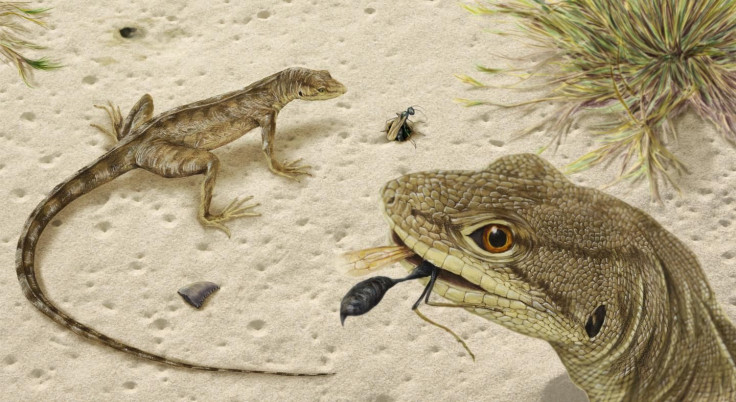New Lizard Species From Dinosaur Era Discovered In Montana, With Closest Relatives In Mongolia

Two nearly complete fossil skeletons found in the Egg Mountain area of Montana have been identified as belonging to a previously unknown lizard species that lived about 75 million years ago, at a time when dinosaurs still lorded over Earth. Surprisingly, the closest relatives of the species, named Magnuviator ovimonsensis, lived in faraway Mongolia.
Based on the excellent condition of the two skeletons found, M. ovimonsensis has been described “from stem to stern” in a paper published Wednesday by a team of researchers, led by paleontologists from the University of Washington and the Burke Museum of Natural History and Culture, who said “the new species fills in significant gaps in our understanding of how lizards evolved and spread during the dinosaur era.”
After analyzing the anatomy of M. ovimonsensis, the researchers found it was an offshoot of ancient iguanian lizards, which today include Old World chameleons, iguanas and anoles in the American tropics, as well as the water-walking basilisk lizards. However, it is only a distant relative of these modern lizards, most of which evolved after the dinosaurs, as well as most lizards that lived at the time, were wiped up in a mass extinction event about 66 million years ago.

Referring to M. ovimonsensis and its Cretaceous Period close cousins from Mongolia, study lead author David DeMar — a postdoctoral research associate at the University of Washington and the Burke Museum — said in a statement Tuesday: “These ancient lineages are not the iguanian lizards which dominate parts of the Americas today, such as anoles and horned lizards. So discoveries like Magnuviator give us a rare glimpse into the types of 'stem' lizards that were present before the extinction of the dinosaurs.”
At about 14 inches, M. ovimonsensis was longer than one foot, and probably ate wasps and other insects, like modern lizards. But given its size, it could also have eaten plants.
“Due to the significant metabolic requirements to digest plant material, only lizards above a certain body size can eat plants, and Magnuviator definitely falls within that size range,” DeMar said.
The name Magnuviator ovimonsensis pays homage to both the location the fossils were found, as well as to their Mongolian connection. It means “mighty traveler from Egg Mountain.”
The study, titled “A new Late Cretaceous iguanomorph from North America and the origin of New World Pleurodonta (Squamata, Iguania),” was published in the journal Proceedings of the Royal Society B.
© Copyright IBTimes 2024. All rights reserved.





















